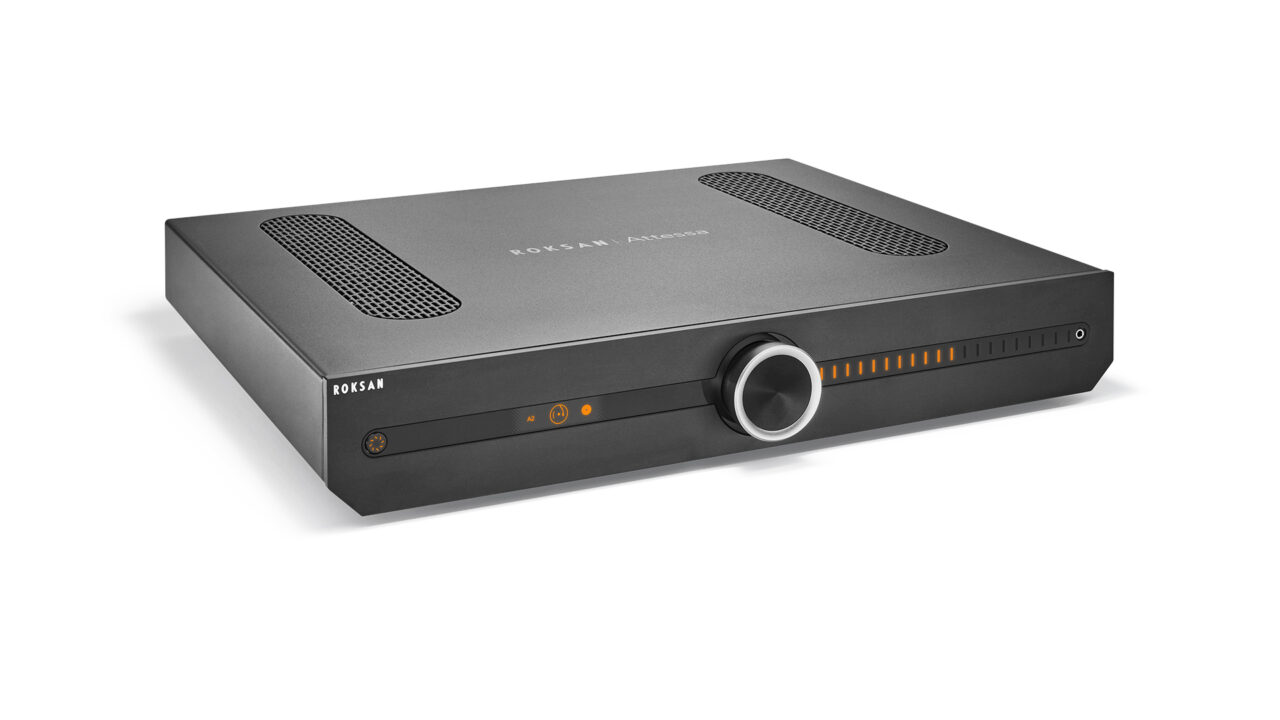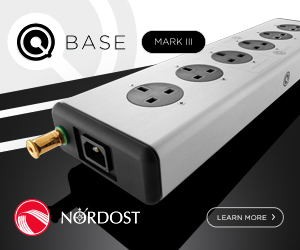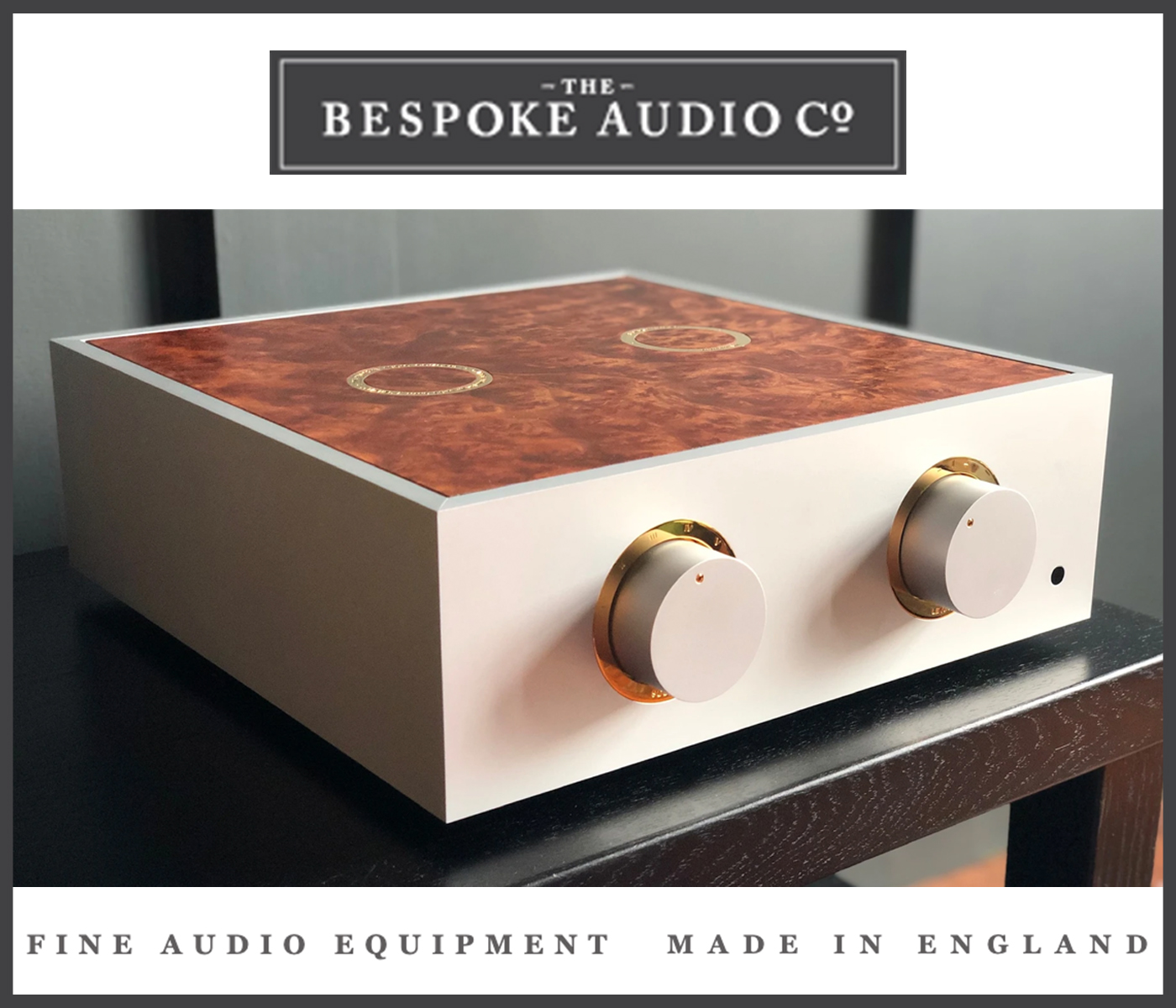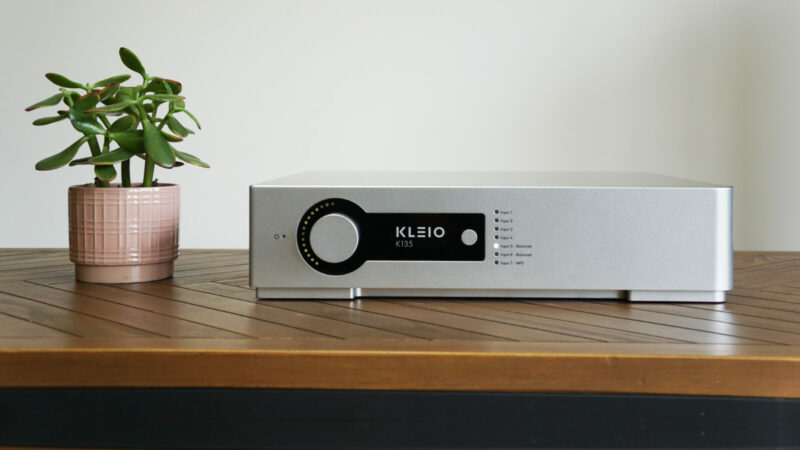Integrated amplifiers are arguably the backbone of any separates system and for many, represent their fist step into serious hifi that will take them on their home listening odyssey. This is where many music lovers will stay, unless the urge for separate power amps takes hold, bringing with it more wallet and shelf space demands for the extra hardware.
And this is why the integrated amp market sector is so hard fought, with every brand worth its salt knowing by getting this right, you can earn customers for the long haul who’ll build a system around your amp. It’s the hifi equivalent of a jack of all trades, serving all your sources in equal favour and delivering their sonic goods to your speakers.
In more recent times we’ve also seen the services an integrated amp offers increase, with many models adding music streaming capabilities, which makes perfect sense for convenience as an allrounder, negating the extra boxes for standalone DACs and streamers.
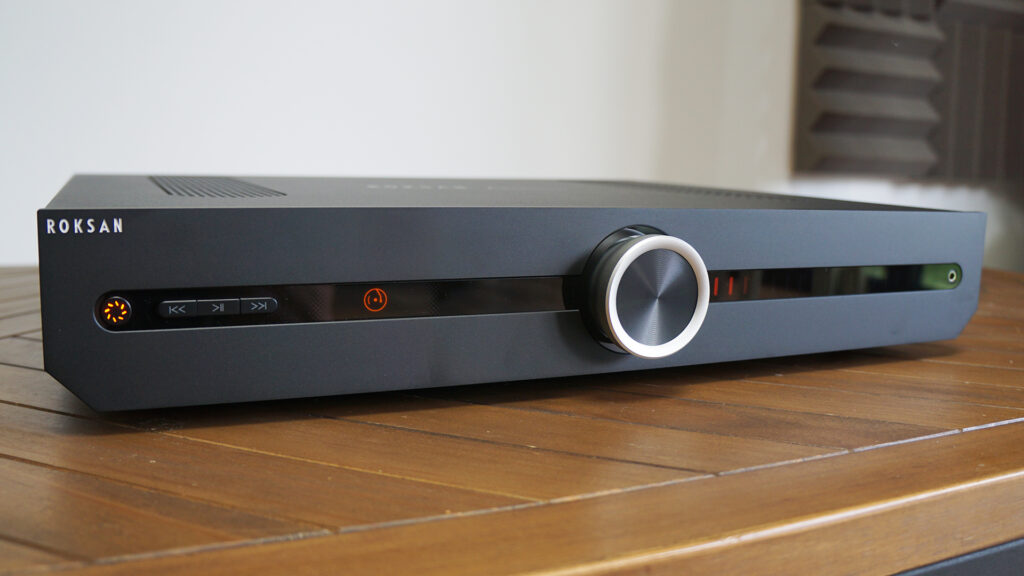
Modern looks with unique styling on its lower corners tells you this is a Roksan
Solid pedigree
With a hifi legacy stretching back some decades and turntables achieving iconic status (its Xerxes being up there with Linn’s LP12 and Michell’s GyroDec), Roksan has continued its approach of offering quality components that stand out from the crowd. Its Caspian electronics have a similar respected lineage, so when Roksan introduced its more recent and affordable Attessa range under current owners Monitor Audio, there was a lot to live up to.
The Attessa series offers a sensible spread of amps, CD transport and a vinyl spinner that’s a clear contender for the most stylish looking record player south of £1k. All of which are designed as ideal partnering gear for each other to build a matching Attessa system around.
In standard non-streaming form the Attessa integrated amp comes in at a shade over £1k, and paying the extra £500 for the streaming version (£1,600 all in) seems an obvious upgrade to stretch to given what it brings, which I imagine most customers would opt for.
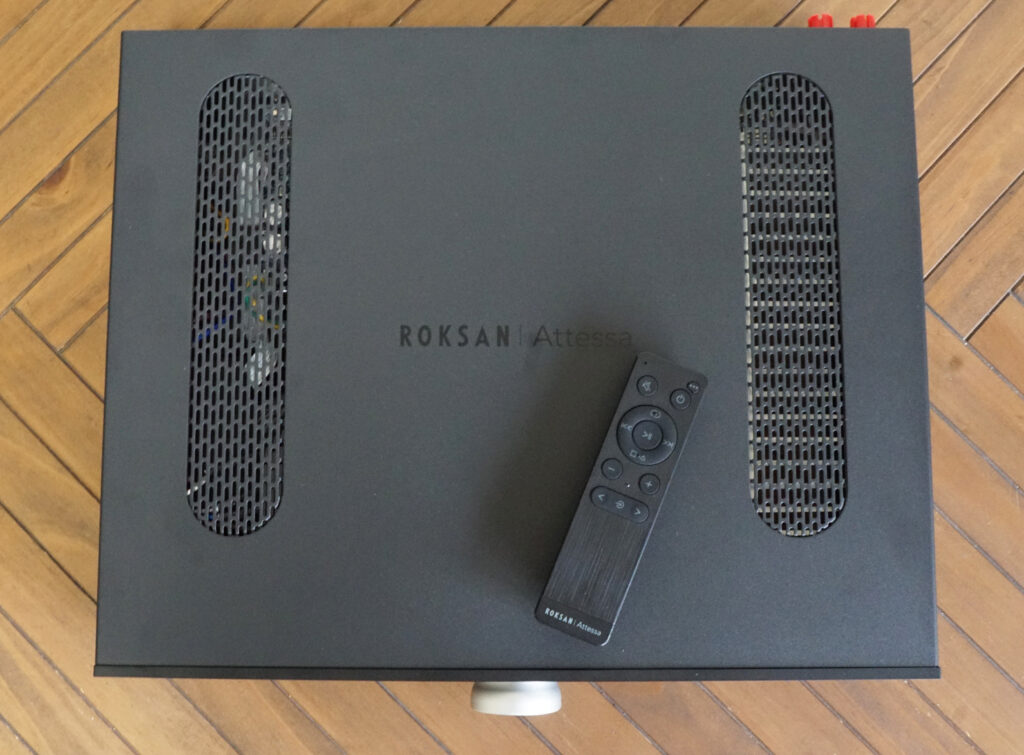
Top vents allow the Attessa’s internal heatsinks to do their job. Branded remote is plastic, but its brushed finish adds finesse
In basic guise the Attessa integrated is a Class AB design offering 80W into 8 ohms per channel (increasing to 130W into 4 ohms), with two sets of line-level analogue inputs and a third for moving-magnet cartridge equipped turntables.
On the digital side you get two optical and two coaxial (S/PDIF) inputs, handling data up to 24-bit/96kHz LPCM for the former and 192kHz for the latter, which will also decode MQA streams, including from the Attessa CD Transport (£550).
There’s Bluetooth connectivity on the table too up to 16-bit/48kHz (catering for both standard and aptX codecs), and BluOS software means this amp is ripe for a wider home network system.
What the streaming module then adds is support for all the usual platform suspects including Amazon Alexa and Music, Spotify Connect, TIDAL Connect, Deezer, Qobuz, HDTracks and HighResAudio, alongside two handy USB inputs for external media (one of which catering for the supplied wifi dongle when forgoing a wired Ethernet connection). The inclusion of a front panel headphone socket will no doubt be welcomed by many and further underlines the Roksan’s do it all approach.
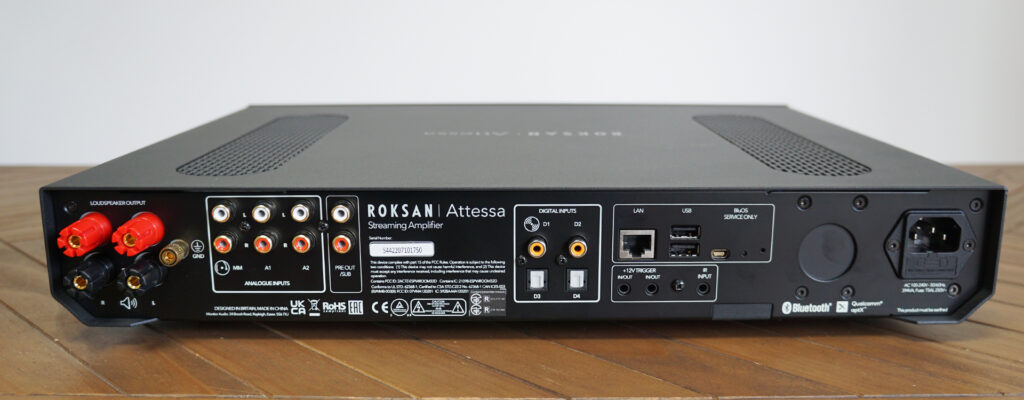
Rear connections include a pair of multiway binding posts for left/right speakers (so no bi-wiring options) alongside analogue and digital inputs. Pre out for an external power amp is a nice touch and the lack of external stubby antennas for Bluetooth keep the Attessa looking clean
Box fresh
Lifting the Attessa Streaming Amplifier from its box reveals its solid build, with a steel wrapped chassis and 5mm thick front panel, all of which manages to hide any visible screw heads from sight, making it appear thoroughly modern. It’s surprisingly heavy for its slender size at 11kg, partly accounted for by a large 400VA internal transformer and internal heatsinks, which you can just about see via the air vents on the top panel (ensuring it looks cool and stays cool).
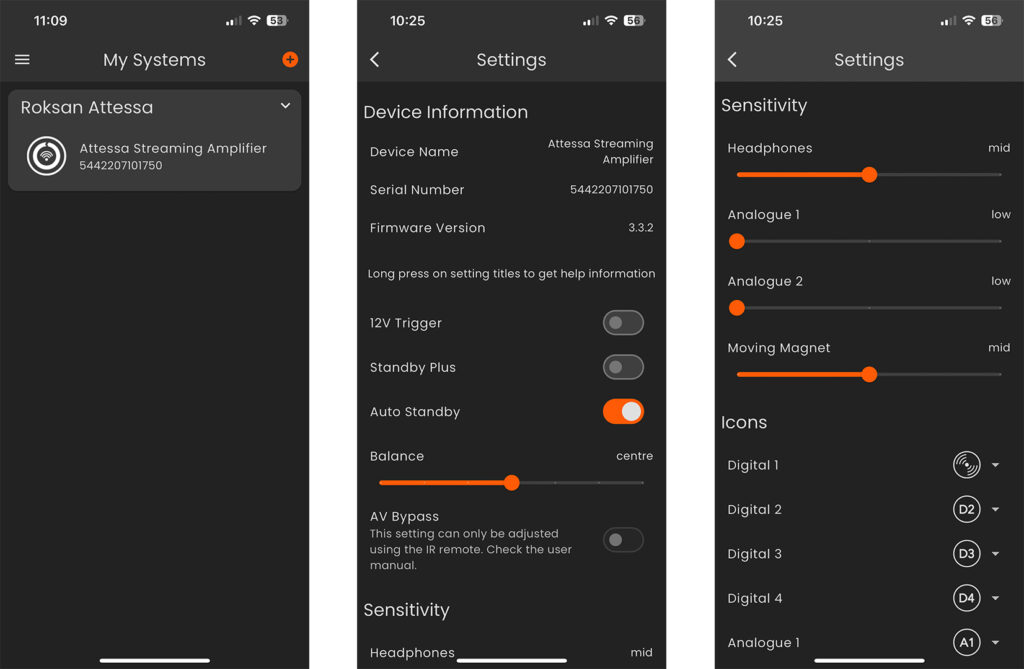
MaestroUnite app showing device selection and features including balance adjust, sensitivity settings and input icons
As someone who reviews many an amp and streamer, I can declare that getting the Attessa up and running is more straightfoward than most. Simply connect up your required cables and then download the MaestroUnite app. The app will then find your device and ask for a corresponding Bluetooth code that is auto-generated on the amp’s front panel. You’re then prompted to insert your home wifi password and after a reboot and prompt to setup BluOS should you wish, you’re good to go.
The app contains a range of handy features including adjusting balance, auto-standby, tweaking sensitivity, and choosing each input’s front panel icons with a range of options.
The front panel is just as intuitive to use, with select controls and a large rotary volume dial with corresponding orange lights, highlighting current output level via a row of orange bars within the backlight screen.

Front panel display sports backlit icons for identifying your current source at a glance. Large volume knob is a joy to use
Performance
Driving a pair of Dynaudio Emit 30 loudspeakers reveals this amp to be bags of fun. Christine and the Queens’ Girlfriend (featuring Dâm-Funk) via Qobuz at 24-bit/44kHz is delivered with layers of dynamics that go well beyond foot tapping levels right from off.
The start/stop nature of the track is also fully captured, showing how well this amp does timing, but it’s more how the amp delivers each note with unfailing energy and depth that’s impressive. With layers of Quincy Jones esque production there’s a lot for any amp to chew on, and the Roksan seems to revel in the task. There’s no sense of having to keep up or recover from the dynamic swings via the Attessa’s delivery, even with the volume dialled up to neighbour knocking levels. Instead the more you ask of it, the more it comes alive.
This is partly due to the stereo image the Attessa paints, with channel separation being especially notable as it pushes the soundstage nice and wide, highlighting that despite its modest output and physical proportions, this is no lightweight in the sonic stakes.

With its slightly Star Wars styling, the Attessa Streaming Integrated is also available in silver finish. Note output level displayed via vertical lights to the right of the volume control
Energised delivery
And while this amp likes to party, its just as comfortable in mellower territory with Stevie Ray Vaughan & Double Trouble’s Tin Pan Alley (AKA The Roughest Place In Town) at 24-bit/176kHz. Again the Attessa’s expansive soundstage is put to good use, allowing Stevie’s maestro guitar work and closely mic’d vocals to be imaged with arresting realism. Having heard this track on many a system, unless it’s delivered with the energy it deserves it can wander into pipe and slippers territory. Thankfully via the Roksan it comes across as fresh as morning sunshine, with the right balance of life and detail but without sounding overly analytical.
Adding my VPI Scout 21 turntable to the mix reveals that the Attessa’s internal phono stage is no mere tickbox add-on, and you’ll need to go someway before warranting an external phono stage – certainly beyond the entry level offerings and perhaps as and when the moving-coil bug bites.
Spinning an original pressing of Tim Buckley’s Sweet Surrender track from his 1972 LP Greeting’s From L.A. allows the Attessa to bring out all the honey rich vinyl warmth that makes this album so enticing (which the digital versions and remasters seem to lack). Bass notes are also well formed, with plenty of depth to get the Dynaudio’s working without sounding bloated, or limited in scale at the other end of things. This again reinforces how well Roksan has managed to engineer this amp to get the most out of those 80 Watts on tap.
Having been spoilt with amps offering double the Attessa’s power levels and more in recent years, its commendable that the Roksan never sounds lacking in drive or grip by comparison, which is more than impressive given its price.
In summary
In short the Attessa is a superb package for the money. Sonically it’s full of fun, managing to marry levels of energy, dynamics and scale with articulation and balance, making it a consummate allrounder in its musical delivery across all genres.
Features wise it also hits a high bar, with a sensible spread of inputs, streaming options and a headphone jack to boot. And when you consider how much it would cost to buy these elements separately (streamer, DAC, phono stage, headphone amp etc…) it’s great value too.


